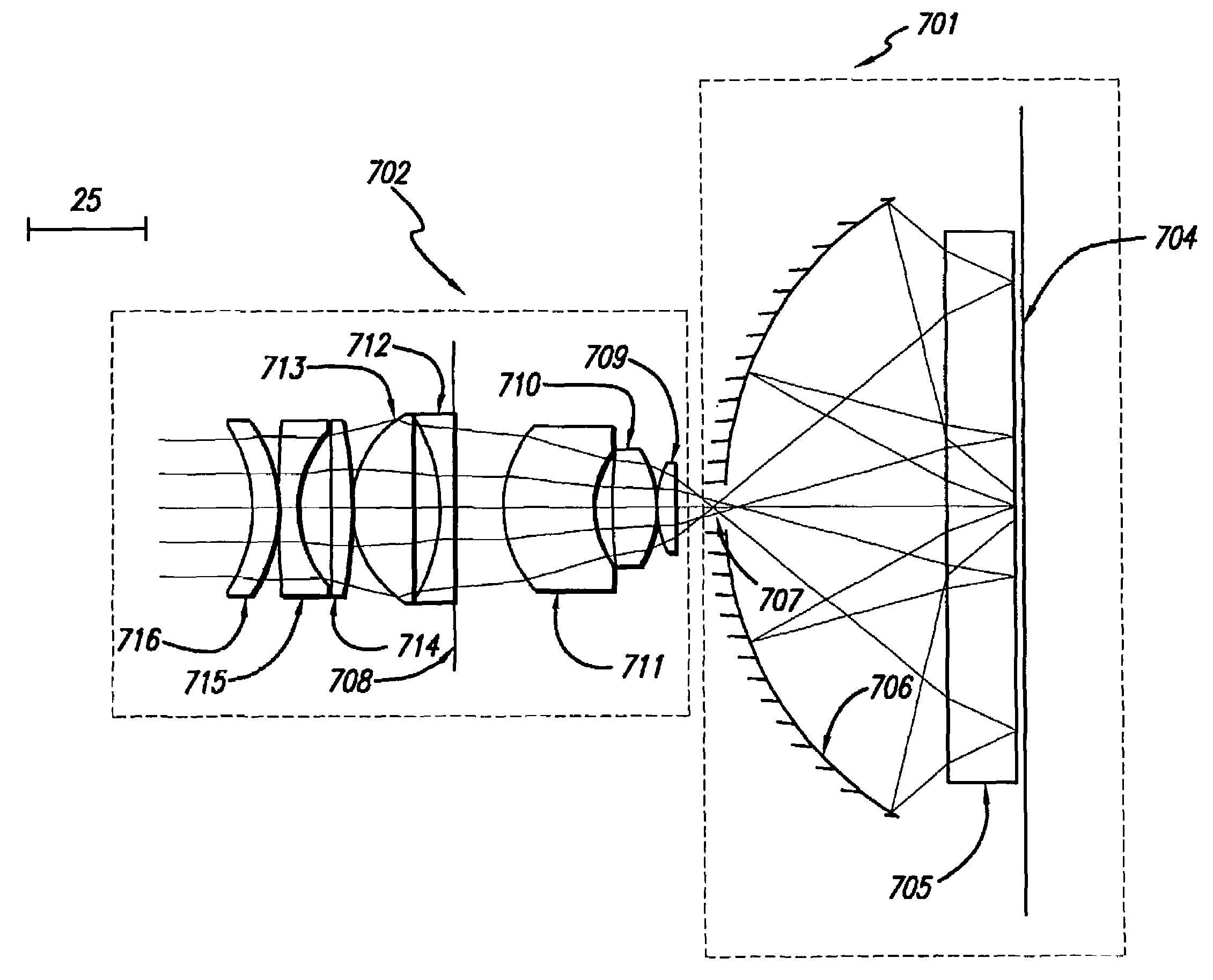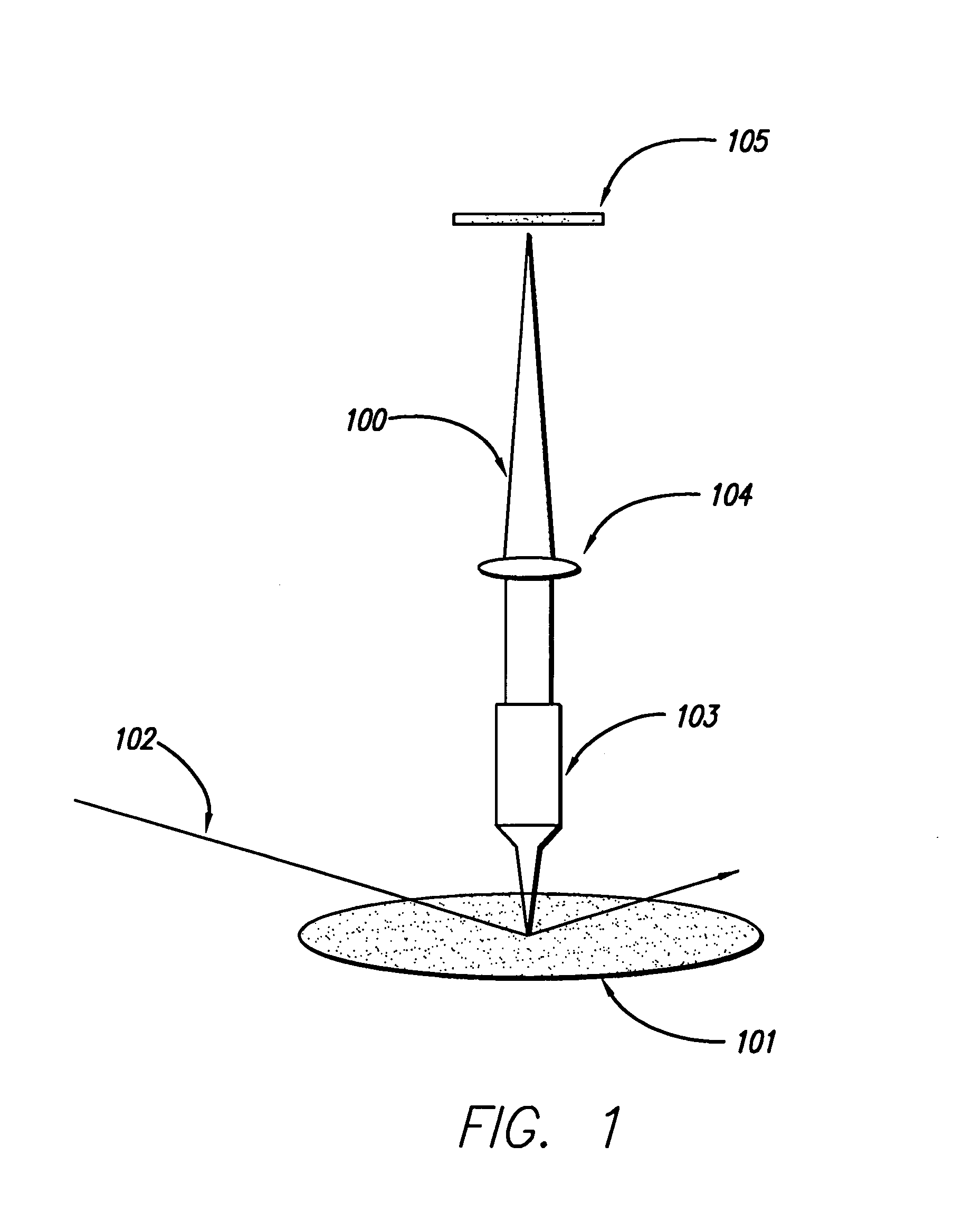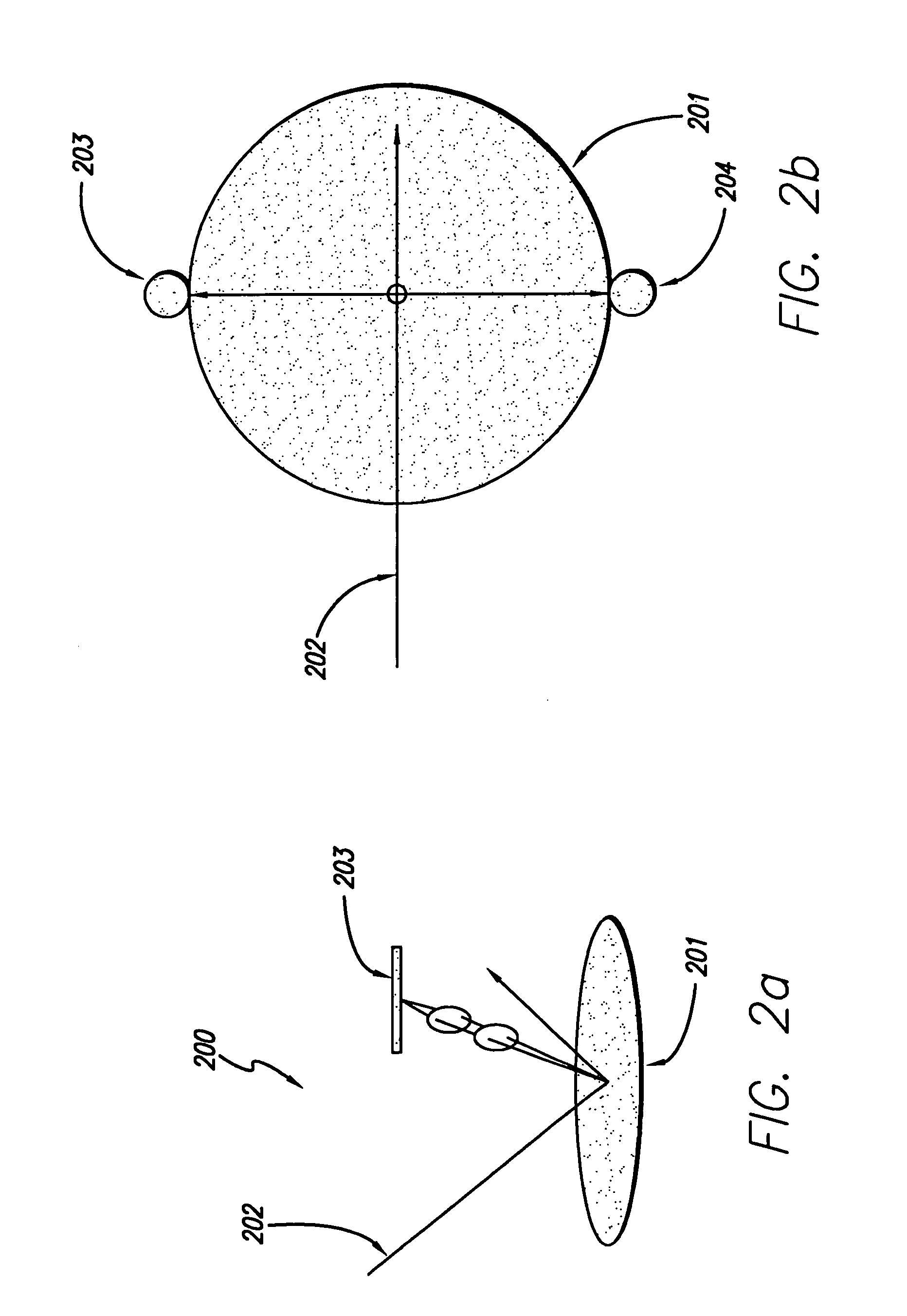High NA system for multiple mode imaging
- Summary
- Abstract
- Description
- Claims
- Application Information
AI Technical Summary
Benefits of technology
Problems solved by technology
Method used
Image
Examples
Embodiment Construction
[0067]The present invention is a multiple mode catadioptric imaging method and apparatus for optical inspection. The inventive apparatus disclosed herein can combine the functions of several prior imaging modes and is based on a high NA catadioptric optical design. The system can be a narrow band system preferably having an NA greater than 0.90 that is highly corrected for low and high order monochromatic aberrations.
[0068]The high NA catadioptric design disclosed herein may be used and optimized for light having different wavelengths, from infrared to the deep ultraviolet. For example, in the ultraviolet spectrum, light beams having wavelengths of 193 nm, 213 nm, 244 nm, 248 nm, 257 nm, 266 nm, and so forth are possible using the concepts disclosed herein, with adjustments that would be apparent to those of ordinary skill in the art.
[0069]An example of an inventive apparatus that supports multiple mode imaging is disclosed. This apparatus is a 0.97 NA catadioptric optical design ha...
PUM
 Login to View More
Login to View More Abstract
Description
Claims
Application Information
 Login to View More
Login to View More - R&D
- Intellectual Property
- Life Sciences
- Materials
- Tech Scout
- Unparalleled Data Quality
- Higher Quality Content
- 60% Fewer Hallucinations
Browse by: Latest US Patents, China's latest patents, Technical Efficacy Thesaurus, Application Domain, Technology Topic, Popular Technical Reports.
© 2025 PatSnap. All rights reserved.Legal|Privacy policy|Modern Slavery Act Transparency Statement|Sitemap|About US| Contact US: help@patsnap.com



